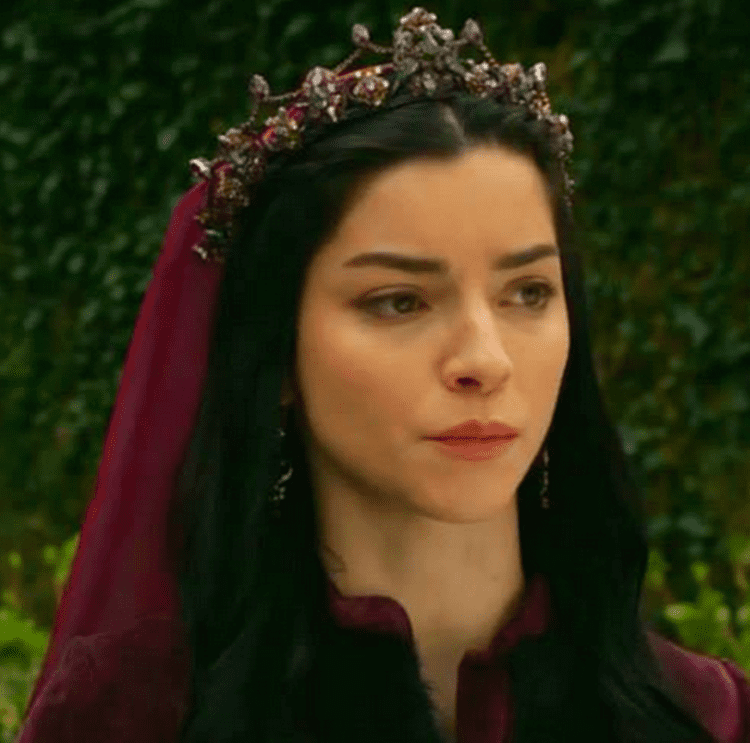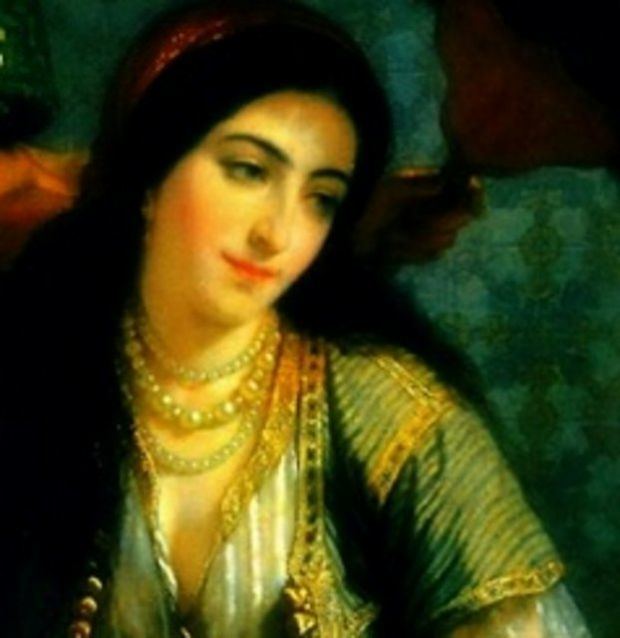Predecessor Mihrimah Sultan Successor Safiye Sultan | Name Nurbanu Sultan Predecessor Hurrem Sultan Spouse Selim II (m. 1545–1574) | |
 | ||
Tenure 15 December 1574 – 7 December 1583 Co-Valide Mihrimah Sultanuntil 25 January 1578 Tenure 7 September 1566 – 15 December 1574 Children Murad III, Fatma Sultan, Sah Sultan, Ismihan Sultan, Gevherhan Sultan Parents Violanta Baffo, Nicolo Venier Similar People Selim II, Safiye Sultan, Mihrimah Sultan, Roxelana, Murad III | ||
The life and death of nurbanu sultan
Afife Nurbanu Sultan (Ottoman Turkish: نور بانو سلطان; c. 1525 – 7 December 1583) was Haseki Sultan of the Ottoman Empire as the principal consort and later legal wife of Sultan Selim II (reign 1566–1574), as well as Valide Sultan as the mother of Sultan Murad III (reign 1574–1595). Conflicting theories ascribe her a Venetian, Jewish or Greek origin. Her birth name may have been Cecilia Venier-Baffo, Rachel or Kalē Kartanou. Nurbanu was one of the prominent figures during the era known as Sultanate of Women.
Contents
- The life and death of nurbanu sultan
- Nurbanu sultan
- Theories about her origin
- Jewish origin
- Cecilia Venier Baffo
- Kal Kartanou
- Haseki Sultan
- Valide Sultan and regent
- Foreign politics
- Charitable establishments and philanthrophy
- Death
- Issue
- References

Nurbanu sultan
Theories about her origin

There are several theories about the ethnic roots of Nurbanu, none of which is generally accepted:
Jewish origin

Turkish historian Ahmet Refik believed she was of Jewish descent, followed by some Turkish historians.
Cecilia Venier-Baffo

The Venetian claimed she was a daughter of Nicolò Venier and Violanta Baffo, abducted in Paros island when it was captured by Hayreddin Barbarossa.
Kalē Kartanou

In 1992, B. Arbel challenged the view that she was really of Venetian descent. For him the most plausible theory is that she was a Greek from Corfou named Kale Kartanou.
Haseki Sultan

Nurbanu became the most favored consort of Ottoman Sultan Selim II, who was put on the throne in 1566, and the mother of Murad III.
While her spouse Selim still a şehzade, Nurbanu had been the head of his princely harem at Manisa. However, when Selim ascended to the throne, she was not head of the imperial harem, as that was a position taken by Selim's elder sister Mihrimah Sultan.
Even after Selim as a sultan began to take other concubines, she persisted as a favorite for her beauty and intelligence. As mother of the heir-apparent, she acted as an advisor to her husband. Although it was far from normal at the time, Selim II would often ask Nurbanu for her advice on various subjects because of his respect for her good judgment. Jacopo Soranzo, Venetian Ambassador reported:
"The Haseki is said to be extremely well loved and honored by His Majesty both for her great beauty and for being unusually intelligent."
She was a devoted wife and a very loyal mother as later events would prove. Like his predecessor Selim let his favorite wife remain at Topkapı throughout his reign. The Ottoman Empire was far from being very stable at the top and clashes over the imperial throne were common. It was also not uncommon for the loser to have his entire family massacred along with him to prevent any future challenge. Nurbanu Sultan was determined, however, that when the time came for her son to succeed his father, nothing would interfere with that.
At the end of Selim II's reign, the haseki Nurbanu received 1,100 aspers a day, while Selim's other consorts, each the mother of a son, received only 40 aspers.
Valide Sultan and regent
Şehzade Murad had been sent to serve as Governor of Manisa on the Aegean coast and was there when Sultan Selim II died in 1574. This would have been the perfect opportunity for someone to seize power with the Sultan dead and his son away from the capital. Nurbanu realized this as much, if not more, than anyone and took quick action. Security and privacy in the harem were the most strict anywhere and no one knew when Selim II had actually died. Nurbanu told no one and hid the dead body of her husband in an icebox and sent to Manisa for her son to come to Constantinople immediately. All the while no one was the wiser that Sultan Selim II had actually departed this life. It was not made known publicly until twelve days later when Murad arrived and Nurbanu delivered up the body of her late husband. Her son became Sultan Murad III and Nurbanu became Valide Sultan, the highest position a woman could hold in the Ottoman Empire. Unlike her predecessor Hürrem Sultan, Nurbanu outlived her husband and enjoyed absolute power between 1574 and 1583, although she was apparently not resident in the Palace after Selim II's death. Nurbanu had ultimate power, and she became a formidable figure with far-reaching influence. Canfeda Hatun, Raziye Hatun, and Hubbi Hatun ladies-in-waiting to Murad and Nurbanu also appear to have been very powerful and influential during his reign.
Foreign politics
After Nurbanu became the valide sultan to her son Murad III, she effectively managed the government together with the Grand Vizier Sokollu Mehmed Pasha, who acted as co-regent with the sultan during the Sultanate of Women. Her intermediary to the world outside the harem was her "kira", Esther Handali. "Kira" was so popular means of communication with the outside world when Nûr-Banû was the Valide Sultan that the two women were said to have been lovers. She corresponded with the queen Catherine de' Medici of France. Venetian accounts are the most prolific in describing Nurbanu Sultan as a woman who never forgot her Venetian origins.
During her nine years of regency (1574–1583), her politics were so pro-Venetian that she was hated by the Republic of Genoa. Some have even suggested that she was poisoned by a Genoese agent. In any case, she died at the palace in the Yenikapı Quarter, Istanbul on 7 December 1583.
Charitable establishments and philanthrophy
During her nine years of regency, Nurbanu ordered the renowned Ottoman architect Mimar Sinan to build the Atik Valide Mosque and its surrounding külliye at the district of Üsküdar in Istanbul, where previously a "Jewish bath" was located. The construction of the külliye was completed and put in commission at the end of 1583, just before the demise of Nurbanu on 7 December 1583. She was buried at the mausoleum of her husband Selim II located inside the Hagia Sophia (then a mosque) at Sultanahmet in Istanbul, Turkey.
Death
Nurbanu died at Istanbul, 7 December 1583, during the reign of her son Murad III. She was buried next to Selim II in his mausoleum in the courtyard of Hagia Sophia,thus becoming the first wife of a Sultan to receive the honor of being laid to rest next to her spouse.
Issue
With Selim,Nurbanu is confirmed to have had at least four children, including:
Though the claim remains disputed, several sources also mention her as the mother of:
